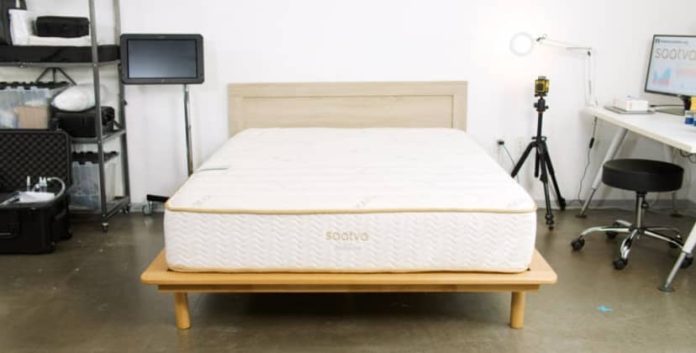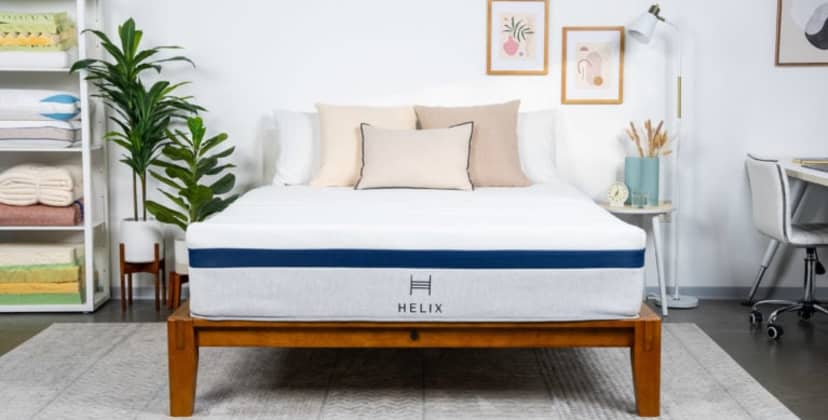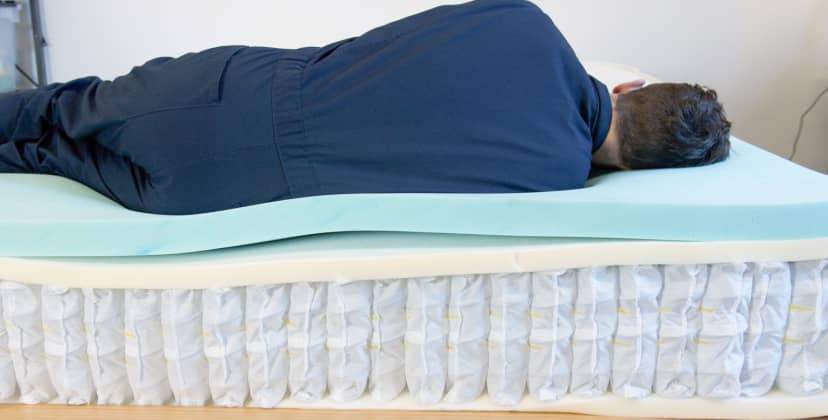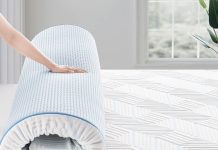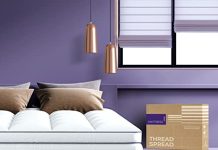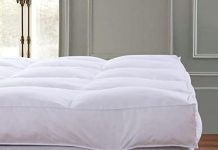Have you ever wondered if there are mattress options out there that can help reduce allergies and ensure a good night’s sleep?
Well, the answer is yes! In this article, we’ll explore the world of hypoallergenic mattresses, what they are, and how they can benefit those who suffer from allergies or respiratory issues.
Say goodbye to sneezing fits, and hello to a restful and allergy-free slumber!
Review contents
Understanding Hypoallergenic Mattresses
What are hypoallergenic mattresses?
Hypoallergenic mattresses are specially designed to reduce allergens and potential irritants that can trigger allergies or asthma. These mattresses are made using materials that are less likely to cause an allergic reaction in individuals with sensitivities. Choosing a hypoallergenic mattress allows you to enjoy a healthier sleep environment that promotes better breathing and overall well-being.
How do hypoallergenic mattresses work?
Hypoallergenic mattresses utilize materials resistant to common allergens such as dust mites, mold, mildew, and pet dander. These mattresses are constructed to minimize the accumulation of allergens and create a barrier between you and potential irritants. This helps reduce the risk of allergic reactions and provides a cleaner and healthier sleep environment.
Benefits of using hypoallergenic mattresses
There are several notable benefits of using hypoallergenic mattresses. Firstly, they can significantly reduce allergy symptoms and asthma attacks by minimizing exposure to allergens. This can lead to improved sleep quality and overall well-being. Secondly, hypoallergenic mattresses are often more durable and resistant to wear and tear, resulting in a longer lifespan than traditional mattresses. Lastly, these mattresses are typically made with high-quality materials, which can offer enhanced comfort and support for a more restful sleep experience.
Materials Used in Hypoallergenic Mattresses
Natural materials
Hypoallergenic mattresses often incorporate natural materials such as organic cotton, wool, and latex. Organic cotton is grown without pesticides or other harmful chemicals, making it a safer option for individuals with allergies or sensitivities. Wool is a natural flame retardant resistant to dust mites, mold, and mildew. Latex, derived from the sap of rubber trees, is naturally hypoallergenic and resistant to dust mites and mold.
Synthetic materials
Synthetic materials used in hypoallergenic mattresses include hypoallergenic foams and fibers, such as polyurethane foam and polyester fibers. These materials are engineered to resist allergens and provide a comfortable and supportive sleep surface. It is essential to look for CertiPUR-US-certified mattresses to ensure they are free from harmful chemicals and emissions.
Certified hypoallergenic materials
Some hypoallergenic mattresses are made using certified hypoallergenic materials that have been tested and approved by independent organizations. These certifications, such as CertiPUR-US, OEKO-TEX Standard 100, and Global Organic Textile Standard (GOTS), guarantee that the materials used in the mattress meet strict standards for safety, sustainability, and allergen resistance.
Common Allergens in Mattresses
Dust mites
Dust mites are one of the most common allergens found in mattresses. These microscopic organisms thrive in warm and humid environments and feed on dead skin cells. Dust mite allergies can cause symptoms such as sneezing, coughing, itching, and congestion. Hypoallergenic mattresses are designed to repel dust mites and prevent their proliferation, providing a healthier sleep environment for individuals with allergies.
Mold and mildew
Mold and mildew are often found in damp and poorly ventilated environments, including mattresses. These fungi can trigger allergic reactions and respiratory problems, especially in individuals with pre-existing sensitivities. Hypoallergenic mattresses are made with materials resistant to mold and mildew, reducing the risk of exposure and creating a healthier sleep space.
Pet dander
If you have a pet, their dander can quickly accumulate in your mattress and trigger allergic reactions. Pet dander consists of tiny skin particles, saliva, and urine that can cause itching, sneezing, and wheezing. Hypoallergenic mattresses are designed to repel pet dander and minimize its presence, allowing pet owners to enjoy a comfortable sleep without allergens.
Types of Hypoallergenic Mattresses
Latex mattresses
Latex mattresses are a popular choice for individuals seeking hypoallergenic options. Natural latex is derived from the sap of rubber trees and possesses inherent hypoallergenic properties. Latex mattresses are resistant to dust mites, mold, and mildew, making them an excellent choice for those with allergies or asthma. Additionally, latex mattresses offer excellent support and comfort, conforming to the body’s contours for pressure relief and spinal alignment.
Memory foam mattresses
Memory foam mattresses have gained popularity recently due to their exceptional comfort and pressure-relieving qualities. High-quality memory foam, especially those with hypoallergenic properties, is resistant to allergens such as dust mites, mold, and mildew. These mattresses also provide excellent motion isolation, allowing couples to sleep undisturbed even if one partner moves during the night.
Innerspring mattresses
While traditional innerspring mattresses may not be inherently hypoallergenic, specific models now feature hypoallergenic components. These mattresses are constructed using materials that repel allergens, such as dust mites and mold. Innerspring mattresses can provide excellent support and breathability, allowing for a relaxed and comfortable sleep experience.
Features to Look for in a Hypoallergenic Mattress
Anti-microbial properties
Hypoallergenic mattresses with anti-microbial properties are designed to inhibit the growth of harmful microorganisms, such as bacteria, fungi, and viruses. These properties can help maintain a clean and hygienic sleep surface, reducing the risk of allergies and infections.
Hypoallergenic covers
Many hypoallergenic mattresses have removable and washable covers designed to repel allergens. These covers act as a barrier between you and potential irritants, ensuring a cleaner and healthier sleep environment. Look for hypoallergenic, breathable, and easy to clean.
Breathability and moisture-wicking
A hypoallergenic mattress should be breathable and possess moisture-wicking properties. This allows for proper air circulation and prevents the buildup of heat and humidity, which can encourage the growth of allergens such as dust mites and mold. Look for mattresses with ventilation channels or cooling technologies to ensure a comfortable and allergen-free sleep experience.
Easy to clean
Keeping your hypoallergenic mattress clean is essential for maintaining its hypoallergenic properties. Look for mattresses that are easy to clean, either by using a vacuum cleaner or by spot cleaning with mild detergent. Removable and washable covers can also make cleaning more convenient, ensuring your mattress remains free from allergens and irritants.
Choosing the Right Hypoallergenic Mattress
Consider your allergies
When choosing a hypoallergenic mattress, it is essential to consider your specific allergies or sensitivities. Consider the specific allergens that trigger your symptoms and choose a mattress that protects against those allergens. For example, if dust mites are a significant concern, opt for a mattress specifically designed to repel dust mites.
Sleeping position
Your sleeping position can also influence the type of hypoallergenic mattress that will work best for you. Each sleeping position requires a different level of support and pressure relief. For example, side sleepers may benefit from a softer mattress cushions the shoulders and hips, while back sleepers may prefer a firmer mattress that provides better spinal alignment.
Firmness level
The firmness level of a mattress is a personal preference that should be determined based on your comfort needs and sleeping preferences. Hypoallergenic mattresses are available in various firmness levels, from plush to firm. Consider your comfort preferences and any specific recommendations from healthcare professionals when choosing the firmness level of your mattress.
Motion isolation
If you share your bed with a partner or a pet, motion isolation can be an essential factor to consider. A mattress with sound motion isolation will minimize movement transfer, allowing you to sleep undisturbed even if your partner moves at night. This can be particularly beneficial for individuals who are easily disrupted by movements or have a partner who tends to toss and turn.
Maintenance and Care for Hypoallergenic Mattresses
Regular cleaning
To maintain the hypoallergenic properties of your mattress, it is essential to clean it regularly. This involves vacuuming the mattress surface to remove dust and other allergens. Additionally, spot-cleaning any spills or stains with mild detergent can help keep your mattress clean and free from irritants.
Using allergen-proof encasements
Using allergen-proof encasements can provide extra protection for your hypoallergenic mattress. These encasements are designed to completely enclose your mattress, creating a barrier against allergens and preventing them from penetrating the surface. Allergen-proof encasements are typically easy to clean and can be effective for individuals with severe allergies or asthma.
Proper ventilation
Proper ventilation is essential to prevent the accumulation of moisture and the growth of mold and mildew. Ensure your mattress is placed on a breathable surface, allowing air to circulate. This can be achieved using a slatted bed frame or ensuring space underneath the mattress for air flow. Additionally, periodically rotating or flipping your mattress can help distribute wear and tear evenly, prolonging its lifespan.
Evaluating Hypoallergenic Mattress Certifications
CertiPUR-US
CertiPUR-US is a certification program that ensures the quality, safety, and environmental responsibility of polyurethane foams used in mattresses. Mattresses with CertiPUR-US certification are made without harmful chemicals and emissions, making them a safe choice for individuals with allergies or sensitivities.
OEKO-TEX Standard 100
OEKO-TEX Standard 100 is a globally recognized certification that tests for harmful substances in textile products. Mattresses with OEKO-TEX Standard 100 certification have been tested to be free from harmful chemicals and allergenic substances, providing confidence in their hypoallergenic properties.
Global Organic Textile Standard (GOTS)
The Global Organic Textile Standard (GOTS) certification ensures the organic status of textiles, including mattresses. GOTS-certified mattresses are made with organic materials free from pesticides and harmful chemicals, offering a hypoallergenic and environmentally friendly sleep solution.
Addressing Common Concerns with Hypoallergenic Mattresses
Cost considerations
Hypoallergenic mattresses may have a slightly higher price tag than traditional mattresses. However, investing in a hypoallergenic mattress can have long-term benefits for your health and overall well-being, making it a worthwhile investment for those with allergies or sensitivities.
Durability
Hypoallergenic mattresses are often designed to be more durable than traditional mattresses. They are made with high-quality materials resistant to wear and tear, ensuring a longer lifespan and reducing the need for frequent replacements. This can ultimately save you money in the long run.
Availability
Hypoallergenic mattresses are widely available from various retailers and online stores. With the growing awareness of allergies and sensitivities, many mattress brands now offer hypoallergenic options to cater to a broader range of customers. You can easily find hypoallergenic mattresses in different sizes, firmness levels, and materials to suit your needs.
Consumer reviews and recommendations
Reading consumer reviews and recommendations can be helpful when choosing a hypoallergenic mattress. Look for feedback from individuals with similar allergies or sensitivities to ensure the mattress meets their expectations. Remember that personal preferences and experiences can vary, so it’s essential to consider multiple opinions and choose a mattress based on your needs and comfort preferences.
Conclusion
Importance of hypoallergenic mattresses
Hypoallergenic mattresses create a healthier sleep environment for individuals with allergies or sensitivities.
These mattresses can significantly improve sleep quality and overall well-being by reducing allergens such as dust mites, mold, and pet dander. Investing in a hypoallergenic mattress is a proactive step towards minimizing allergic reactions and enjoying a more restful and rejuvenating sleep experience.
Finding the perfect hypoallergenic mattress
When searching for the perfect hypoallergenic mattress, consider the materials used, certifications, and features that address your specific allergies and preferences.
Look for mattresses tested and certified for their hypoallergenic properties, and evaluate their durability and comfort based on consumer reviews and recommendations. You can enjoy a healthier and more comfortable sleep environment by choosing a hypoallergenic mattress that meets your needs.

